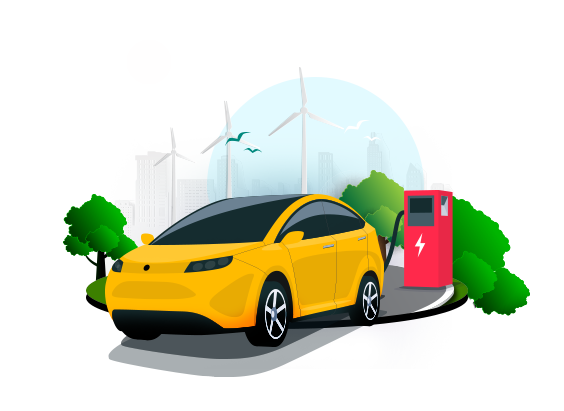Electric Vehicles and the Revolution of BLDC/PMSM Motors
Electric Vehicles (EVs) are not just a trend; they are a significant step towards a sustainable future. With a sharp rise in awareness about environmental issues, the shift from internal combustion engines to electric motors has become inevitable. Among the various electric motor technologies, Brushless DC Motors (BLDC) and Permanent Magnet Synchronous Motors (PMSM) are the key drivers in the field of EVs. Here’s why:
Brushless DC Motors (BLDC) in EVs
BLDC motors are highly efficient and offer a good torque-to-weight ratio, making them increasingly popular in EVs.
1. Construction & Working:
- Stator: Wound with three-phase windings, it creates a rotating magnetic field.
- Rotor: Contains permanent magnets and rotates in response to the magnetic field generated by the stator.
- Electronic Controller: Controls the current and voltage supplied to the stator.
2. Advantages:
- Efficiency: BLDC motors are about 90% efficient, translating into better mileage for EVs.
- Maintenance: Lack of brushes reduces wear and tear.
- Performance: Higher speed range and better torque control.
3. Challenges:
- Cost: Higher cost due to complex controllers and permanent magnets.
- Control Complexity: Requires advanced control techniques for optimal performance.
Permanent Magnet Synchronous Motors (PMSM) in EVs
PMSM is closely related to BLDC motors but differs primarily in the way the motors are controlled.
1. Construction & Working:
- Stator: Similar to the BLDC, it contains three-phase windings.
- Rotor: Contains permanent magnets, synchronizing its movement with the stator's magnetic field.
- Controller: A more complex controller providing sinusoidal current to the stator.
2. Advantages:
- High Efficiency: Slightly more efficient than BLDC, especially at low speeds.
- Smooth Operation: Delivers smooth torque output.
- Cooler Operation: Generally runs cooler due to sinusoidal current supply.
3. Challenges:
- Control Complexity: Requires sophisticated control algorithms.
- Cost: Similar to BLDC, PMSM motors are expensive.
Conclusion: BLDC vs PMSM in EVs
Both BLDC and PMSM are excellent choices for EV applications, but the selection depends on specific requirements such as efficiency, cost, and desired torque characteristics.
- BLDC: Suitable for applications requiring high efficiency, simple control, and robust performance.
- PMSM: More appropriate for applications demanding smooth operation, precise control, and efficiency across varying speeds.
In the dynamic field of EVs, research and technological advancements in BLDC and PMSM are crucial. Their increasing efficiency, reducing costs, and adaptability to various vehicle needs will play a significant role in shaping the future of electric mobility. As we move towards a cleaner, greener future, the continued exploration of these motor technologies will undoubtedly drive the success of the electric vehicle revolution.

Comments
Post a Comment